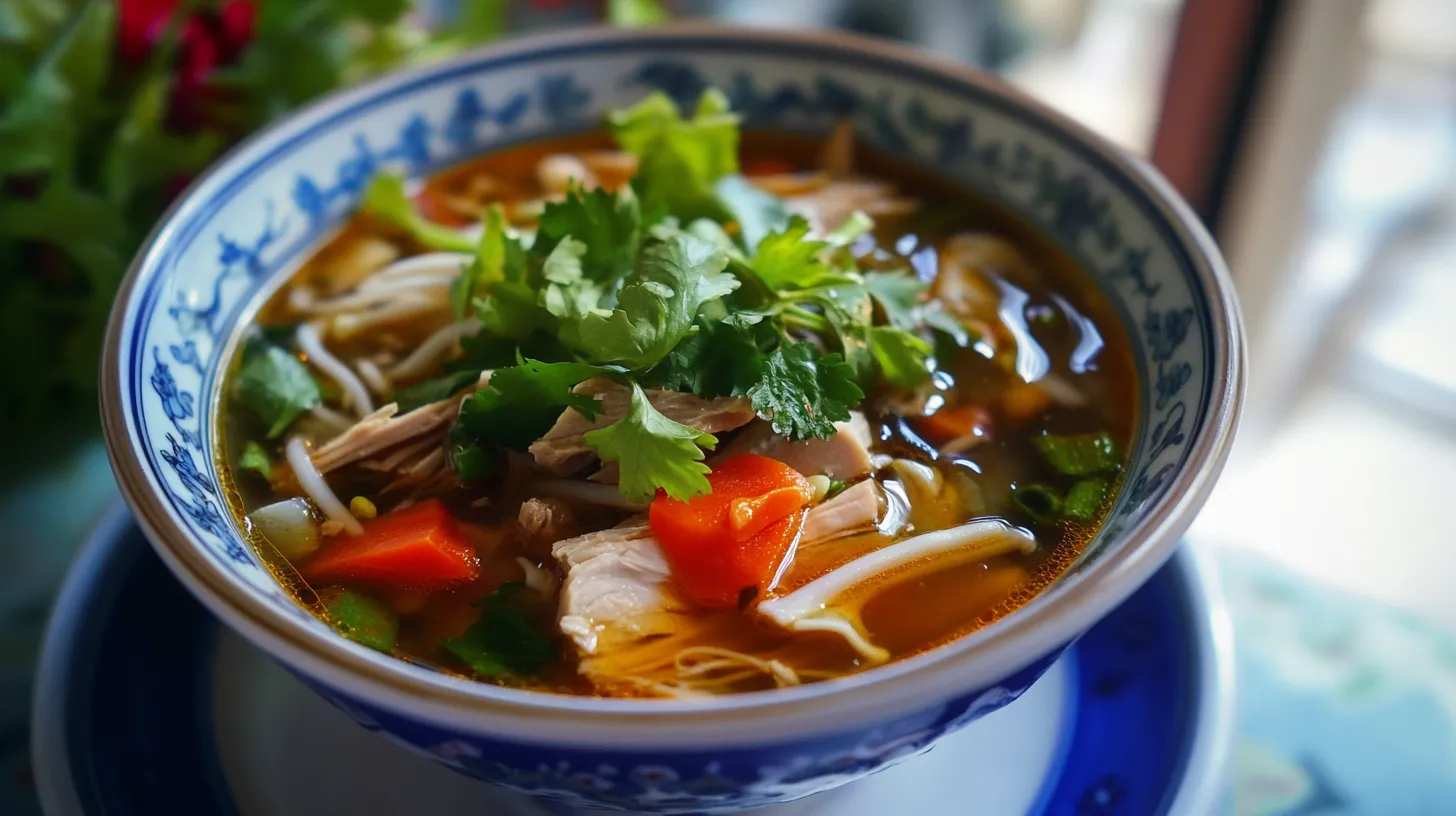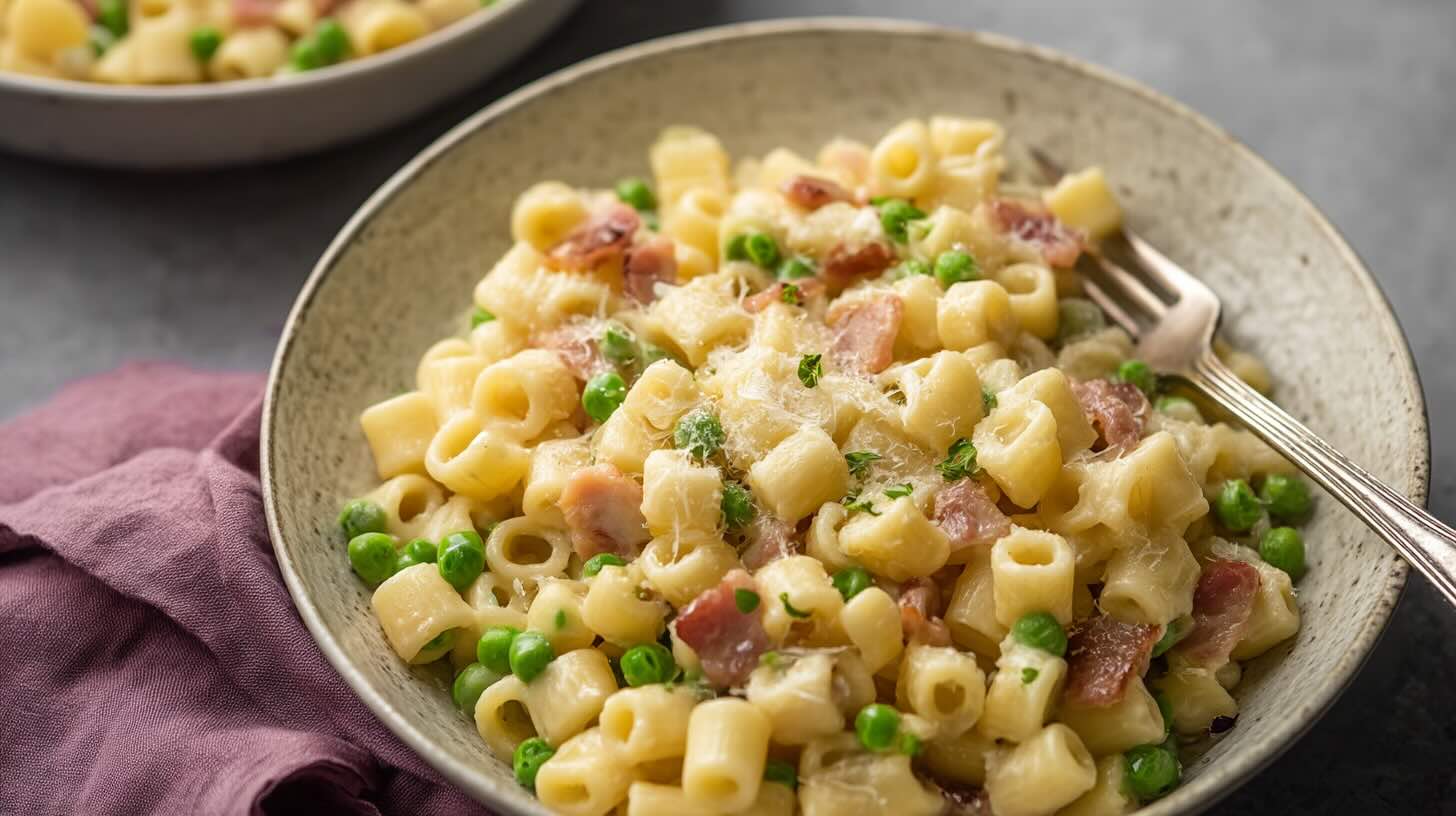Growing up in my grandmother’s kitchen, I was always fascinated by how she could transform simple ingredients into the most comforting bowl of soup. As I watched her stir the pot, I would ask, “What is the secret ingredient in soup that makes it taste so amazing?” She would smile and say, “Patience, love, and a little something extra.” It wasn’t until years later that I truly understood what she meant.
Table of Contents
What Makes a Soup Truly Special?
Understanding the Basics of a Delicious Soup
Every memorable soup starts with a foundation. Think of it as building a house—you need solid ground before adding the walls and roof. For soup, this foundation is typically a combination of aromatics like onions, carrots, and celery (what chefs call “mirepoix”).
Last winter, when I was battling a nasty cold, I decided to make my grandmother’s chicken soup. As I chopped the onions, their sweet aroma filled my kitchen, immediately transporting me back to her warm, bustling kitchen. What is the secret ingredient in soup that makes it healing? I’ve come to believe it’s partly in these humble beginnings.
How a Secret Ingredient Elevates the Flavor
The magic happens when you add that unexpected element—what I call the “secret ingredient.” It’s the thing that makes people taste your soup and ask, “What’s in this? It’s amazing!”
A few months ago, I hosted a dinner party where I served a simple tomato soup. My friend Maria couldn’t stop raving about it. “There’s something different about this,” she said. “What did you add?” I smiled, knowing that the splash of balsamic vinegar I’d added at the end had transformed an ordinary soup into something memorable.
Common Secret Ingredients in Soup
Herbs and Spices: A Flavorful Touch
Herbs and spices are like the fairy dust of cooking—they can transform something ordinary into extraordinary with just a pinch.
I learned this lesson dramatically when I was experimenting with a butternut squash soup. It was good, but something was missing. On a whim, I added a pinch of nutmeg and a sprinkle of cinnamon. The soup went from “nice” to “wow” in seconds. The warmth of these spices complemented the natural sweetness of the squash perfectly.
Fresh herbs added at the end can also brighten a soup tremendously. A handful of chopped basil or cilantro can cut through richness and add a fresh dimension.
The Importance of Broth and Stock in Soup
If I had to choose one answer to “What is the secret ingredient in soup?” it might be a good broth or stock. It’s the liquid foundation that carries all the flavors.
When I first started making my own vegetable stock, I was amazed at the difference it made in my soups. Store-bought versions simply couldn’t compare. I now save vegetable scraps throughout the week—carrot tops, onion skins, mushroom stems—and simmer them with water and a bay leaf on Sunday afternoons.
My friend Sophia once told me her grandmother’s secret for chicken soup was to add a parmesan rind to the broth as it simmered. I tried it, and the depth of flavor was incredible—umami-rich and subtly complex.
Unexpected Ingredients That Surprise Your Taste Buds
Sweet and Sour Additions: A Twist on Traditional Soup
Sometimes, the secret ingredient is something that creates contrast. A touch of sweetness in a savory soup, or a hint of acidity in a rich broth, can elevate the entire dish.
I discovered this by accident when making a carrot ginger soup. I was out of regular carrots and used some sweeter rainbow carrots instead. The soup was good, but a bit too sweet. On impulse, I squeezed in some lemon juice. That bright acidity balanced the sweetness perfectly and made all the flavors pop.
Another time, I added a tablespoon of maple syrup to a spicy butternut squash soup. The slight sweetness tempered the heat and brought out the squash’s natural flavor in a way that was subtle but transformative.
Using Umami to Enhance the Depth of Soup
Umami—that savory, deeply satisfying flavor—can be the secret weapon in soup-making. It’s what gives many soups their satisfying, crave-worthy quality.
I learned about umami’s power when I started adding nutritional yeast to my vegetable soups. This ingredient, often used in vegan cooking, adds a cheesy, nutty flavor that makes vegetable soups taste more substantial and satisfying.
Dried mushrooms are another umami powerhouse. When added to a simple vegetable broth, they create a rich, earthy base that makes even the simplest soup taste like it’s been simmering for hours.
How to Find Your Own Secret Ingredient
Experimenting with Unconventional Flavors
Finding your secret ingredient often means stepping outside your comfort zone and trying combinations that might seem unusual at first.
Last summer, I was making a cold cucumber soup and, on a whim, added a handful of fresh mint from my garden. The bright, cool flavor transformed the soup into something exceptional—perfect for a hot day.
Sometimes my experiments fail spectacularly. My attempt at adding coffee to a black bean soup is something my family still teases me about. But those failures are part of the journey, and they make the successes even sweeter.
Pairing Ingredients for the Perfect Balance
The best secret ingredients create balance. They might add a missing element—acidity, sweetness, heat, or umami—that completes the flavor profile.
I once made a tomato soup that tasted flat despite using beautiful, ripe tomatoes. After some thought, I added a teaspoon of honey and a splash of rice vinegar. The honey brought out the tomatoes’ natural sweetness, while the vinegar added brightness. Together, they created perfect harmony.
Regional and Cultural Secrets in Soup
Key Ingredients in Eastern Soups
Eastern cuisines offer amazing insights into what makes a soup special. Their secret ingredients often introduce flavors that might be unfamiliar but deliciously transformative.
When I visited my friend Mei in Thailand, she taught me to make Tom Kha Gai. The secret ingredient was galangal—a relative of ginger with a piney, citrusy flavor. I had never tasted anything like it, and now I grow it in my garden just for soup.
Japanese miso is another eastern secret ingredient that transforms soups. A spoonful added to a simple vegetable broth creates depth and complexity that would otherwise take hours to develop.
Traditional Soups Around the World and Their Unique Flavors
Every culture has its own answer to “What is the secret ingredient in soup?” and exploring these traditions can expand your soup-making horizons.
In Morocco, I discovered that a pinch of saffron threads and a cinnamon stick transform a simple lentil soup into something exotic and complex. Greek avgolemono soup gets its distinctive character from the lemon and egg mixture that’s stirred in at the end.
My Italian neighbor taught me that a Parmesan rind added to minestrone creates a depth of flavor that’s impossible to achieve any other way. It’s now a staple in my freezer, saved specifically for soup-making days..
Flavor Directory: 17 Secret Ingredients to Transform Your Soup
Throughout my soup-making journey, I’ve discovered that there are countless ways to answer the question “What is the secret ingredient in soup?” Here’s a quick guide to all the flavor-enhancing ingredients mentioned in this article that you might want to experiment with:
- Balsamic vinegar: Adds complexity and subtle sweetness to tomato-based soups
- Nutmeg: Brings warmth and depth to creamy vegetable soups, especially butternut squash
- Cinnamon: Complements sweet vegetables and adds warmth to hearty soups
- Fresh basil: Brightens tomato soups and adds a peppery freshness
- Cilantro: Perfect for adding a fresh, citrusy note to Asian-inspired soups
- Parmesan rind: Creates an umami-rich base for minestrone and other Italian soups
- Lemon juice: Balances sweetness and adds brightness to almost any soup
- Maple syrup: Tempers spiciness and enhances natural vegetable sweetness
- Nutritional yeast: Adds a cheesy, savory flavor to vegetable soups
- Dried mushrooms: Creates an earthy, rich base for broths and stocks
- Fresh mint: Brings cooling freshness to summer soups and Mediterranean flavors
- Honey: Balances acidity in tomato soups and enhances natural sweetness
- Rice vinegar: Adds gentle acidity and balance to rich soups
- Galangal: Gives Thai soups their distinctive citrusy, piney flavor
- Miso: Transforms simple broths with deep, complex umami flavor
- Saffron: Adds exotic floral notes and beautiful color to Mediterranean soups
- Cinnamon stick: Infuses soups with gentle warmth without overwhelming them
Each of these ingredients has the power to transform an ordinary soup into something memorable. The key is to start with a small amount and adjust to taste, letting your palate guide you to soup perfection.
Soup Recipes You’ll Enjoy
If you’ve enjoyed these hearty soup recipes, why not explore more comforting and flavorful options? Here are some ideas to continue your culinary journey:
For a creamy and indulgent option, try our Creamy Parmesan Italian Sausage Soup, packed with rich flavors and tender sausage.
If you love bold and spicy flavors, our Chopt Spicy Chicken Soup with Rice is a satisfying meal that’s perfect for chilly days.
Looking for a Tex-Mex twist? Our Taco Soup Frios Recipe combines all your favorite taco flavors in one hearty bowl.
For a taste of the Caribbean, explore our Jamaican Chicken Soup Recipe, a vibrant and aromatic dish that’s sure to impress.
And if you’re curious about more global soup recipes, check out our collection of comforting soups from around the world!
Frequently Asked Questions (FAQs)
Why do chefs put vinegar in soup?
Chefs add a small amount of vinegar to soup to brighten flavors and create balance. Vinegar’s acidity cuts through richness, enhances other ingredients, and adds complexity without making the soup taste sour. Just a splash at the end of cooking can transform a flat-tasting soup into something much more vibrant.
What gives soup the best flavor?
The best soup flavors come from layering ingredients. First, sauté onions, garlic, or other aromatics. Then, add good-quality stock and fresh vegetables. Finally, season with herbs, spices, or even a splash of lemon juice. This combo creates a delicious soup that’s simple yet amazing in every spoonful.
What gives vegetable soup that depth of flavor?
Vegetable soup gets its depth from caramelizing vegetables first, using umami-rich ingredients (mushrooms, tomato paste, soy sauce), adding herbs and spices, and simmering long enough for flavors to meld. Roasting vegetables before adding them to the soup also creates wonderful complexity through caramelization.
Why do some soups taste better the next day?
Soups improve overnight because flavors have time to meld as ingredients continue to release compounds that blend together. Starches absorb liquid and seasonings, spices bloom fully, and the overall taste becomes more harmonious. The cooling and reheating process also breaks down vegetables and proteins further, enhancing the soup’s texture and taste.
Conclusion
So what is the secret ingredient in soup? After years of cooking and experimenting, I’ve come to believe that it’s not just one thing. Sometimes it’s an unexpected spice, sometimes it’s a splash of acid, sometimes it’s a technique like roasting vegetables before adding them to the pot.
But perhaps my grandmother was right all along. The true secret ingredient might be love—the care and attention you put into choosing ingredients, the patience to let flavors develop, and the joy of sharing something nourishing with people you care about.
The next time you make soup, try adding your own secret ingredient. It might be something traditional, or it might be something only you would think of. Either way, it’s what will make your soup uniquely yours—a recipe worth passing down through generations, just like my grandmother passed hers to me.





